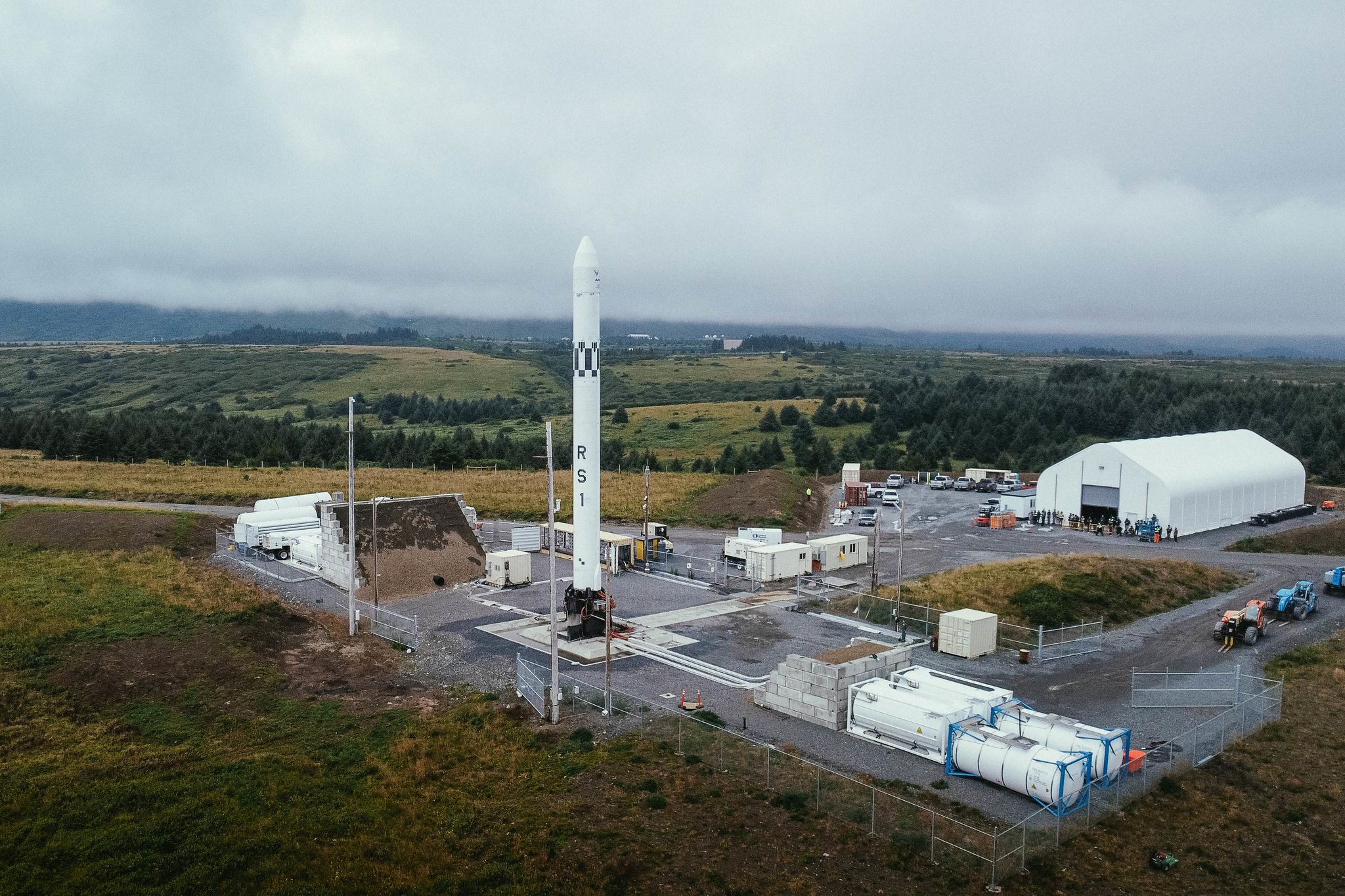Smallsat launcher ABL Space Systems gearing up for its 1st-ever liftoff
The company's RS1 rocket just completed a fueling test on the pad.

Small-satellite launch company ABL Space Systems is gearing up for its first-ever liftoff.
ABL completed a key fueling test, called a wet dress rehearsal, with its RS1 rocket on the pad at the Pacific Spaceport Complex on Alaska's Kodiak Island this week, the company said.
"All pre-launch operations are complete. We are working with the FAA to finalize our launch window," ABL announced via Twitter on Thursday (Sept. 15), referring to the U.S. Federal Aviation Administration.
Related: A history of rockets
RS1 Wet Dress Rehearsal // 9.13.2022 pic.twitter.com/EL4HkqgUjkSeptember 15, 2022
Such updates are relatively rare. ABL doesn't tweet very often or do much other public self-promotion; it hasn't even told us what "ABL" stands for. It is clear, however, that the smallsat launch provider has big plans. (ABL did not respond to an email inquiry in time for this story's publication.)
ABL boasts a portable ground operations system and launch vehicle that all pack into a handful of easy-to-transport shipping containers. The company's RS1 rocket is capable of launching up to 2,975 pounds (1,350 kilograms) to low Earth orbit (LEO), and thanks to the whole system's hyper-portability, can be deployed from nearly anywhere on the planet with a big enough flat concrete pad, according to ABL's website.
ABL appears to do almost everything in-house. Founded in 2017, the company designs and manufactures the majority of its own infrastructure and launch materials. For whatever parts ABL outsources, the company maintains a firm grip, writing on its website that "not just our suppliers, but our sub-suppliers and investors are highly vetted and audited."
Get the Space.com Newsletter
Breaking space news, the latest updates on rocket launches, skywatching events and more!
ABL Space Systems is headquartered in El Segundo, California, where much of its design and manufacturing take place alongside assemblies and system integrations. The company operates two facilities in the Mojave Desert — one at Edwards Air Force Base and the other at the Mojave Air and Space Port. ABL's Mojave Desert facilities focus on research and development, as well as engine and equipment testing. ABL also holds a suite of offices in Seattle "to be responsive to customer needs across geographies," according to the company's website.
ABL's RS1 rocket stands 88 feet (26.8 meters) tall, and is powered by nine of the company's E2 engines in its first stage and a singular E2 in its second. ABL describes the E2 rocket engine as "intentionally boring." The E2 is built, in part, using 3D-printed components that ABL produces in-house and is fueled by a choice combo of liquid oxygen and either RP-1 or Jet-A, which are both widely available forms of kerosene fuel. ABL is charging $12 million per RS1 launch.
The upcoming liftoff — the rocket's debut flight — will loft two cubesats called VariSat 1A and VariSat 1A 1B, according to EverydayAstronaut.com. The duo, which belong to Texas-based company OmniTeq, will launch into a polar orbit as part of a demonstration mission "to experiment and gain flight heritage with a satellite designed to support HF [high frequency] marine data communications," according to a filing with the U.S. Federal Communications Commission. VariSat 1C launched aboard a SpaceX Falcon 9 rocket on May 25 of this year.
A successful first launch of ABL's RS1 rocket will bolster confidence in the new launch provider, which has already secured a contract with Lockheed Martin for up to 58 missions through 2029. That packed manifest is in line with the company's goal to achieve a "high-cadence, no-fuss future of orbital launches."
Follow us on Twitter @Spacedotcom or on Facebook.
Join our Space Forums to keep talking space on the latest missions, night sky and more! And if you have a news tip, correction or comment, let us know at: community@space.com.

Josh Dinner is the Staff Writer for Spaceflight at Space.com. He is a writer and photographer with a passion for science and space exploration, and has been working the space beat since 2016. Josh has covered the evolution of NASA's commercial spaceflight partnerships and crewed missions from the Space Coast, as well as NASA science missions and more. He also enjoys building 1:144-scale model rockets and human-flown spacecraft. Find some of Josh's launch photography on Instagram and his website, and follow him on X, where he mostly posts in haiku.









